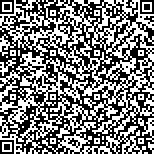| 引用本文: | 张翼,冯妍,李晓明,王斌贵.海藻组分抑制乙酰胆碱酯酶活性研究.海洋与湖沼,2005,36(5):459-464. |
| |
|
| |
|
|
| 本文已被:浏览 1694次 下载 3136次 |

码上扫一扫! |
|
|
| 海藻组分抑制乙酰胆碱酯酶活性研究 |
|
张翼1,2, 冯妍1,2, 李晓明1, 王斌贵1
|
|
1.中国科学院海洋研究所实验海洋生物学重点实验室 青岛266071;2.中国科学院研究生院 北京100039
|
|
| 摘要: |
| 采用乙酰胆碱酯酶抑制剂活性筛选模型对采自青岛沿海的22种海藻样品提取物的石油醚组分和乙酸乙酯组分进行了活性筛选。结果表明,22种海藻的石油醚组分均具有不同程度的乙酰胆碱酯酶抑制活性,其中亮管藻、海头红、鸭毛藻和孔石莼表现出较强的活性,在浓度为50μg/ml时的抑制率均大于50.0%,分别为50.5%、55.5%、56.6%和65.8%;其他大部分海藻的抑制率在30.1%到48.9%之间。与石油醚组分不同的是,只有少数海藻的乙酸乙酯组分表现出乙酰胆碱酯酶抑制活性,其中鸭毛藻的活性最为显著,在浓度为25μg/ml时抑制率高达71.8%;孔石莼的乙酸乙酯组分也具有较强的抑制活性;其余海藻的乙酸乙酯组分对乙酰胆碱酯酶的抑制活性较弱,有些不仅没有活性,反而表现出不同程度的增强作用。 |
| 关键词: 海藻组分 乙酰胆碱酯酶 抑制剂 活性筛选 |
| DOI: |
| 分类号: |
| 基金项目:中国科学院“百人计划”资助项目,LSC2-10号;中国科学院海洋研究所知识创新工程领域前沿资助项目,L79032432号 |
附件 |
|
| ACETYLCHOLINESTERASE INHIBITORY SCREENING FOR FRACTIONS OF SEAWEEDS |
|
ZHANG Yi1,2, FENG Yan1,2, LI Xiao-Ming1, WANG Bin-Gui1
|
|
1.Key Laboratory of Experimental Marine Biology, Institute of Oceanology, Chinese Academy of Sciences, Qingdao, 266071;2.Graduate School, Chinese Academy of Sciences, Beijing, 100039
|
| Abstract: |
| For its important role in the pathologic mechanism of Alzheimer’s Disease (AD), acetylcholinesterase (AchE) has become one of the hottest target enzymes in inhibitor screening. In the present study, 44 samples of petroleum ether-, ethyl acetate-soluble fractions derived from the organic solvent extracts of 22 marine seaweeds collected near Qingdao coastline (14, 7 and 1 species belonging to Rhodophyta, Phaeophyta, and Chlorophyta, respectively), were screened and assessed for the inhibitory activities to AchE.
By spectrophotometric analysis, the AChE inhibitor screening model was established through measurement of 3 curves including OD-t, OD-enzyme activity, and 1/OD-1/[S], and the solvent used in the screening was selected and compared in dissolving capability and by the inhibition ratio to the enzyme. It was found that in 20-minute test, this Michaelis enzymatic reaction remained constant. The enzyme activity can be represented by the OD value according to their direct proportion in this constant stage. In addition, 50% aqueous ethanol was selected as an unified solvent to dissolve the samples in the activity screening.
The AChE inhibitor screening results indicated that most of the petroleum ether-soluble fractions among the tested samples exhibited various activities in each screening. Hyalosiphonia caespitosa, Colpomenia sinuosa, Plocamium telfairiae, Symphyocladia latiuscula, and Ulva pertusa demonstrated higher activity with the inhibition ratios of 50.5%, 52.5%, 55.5%, 56.6%, and 65.8%, respectively, at the concentration of 50μg/ml. In this concentration, most of the other petroleum ether-soluble samples showed moderate activities with the inhibition ratios between 30.1% and 48.9%, except for Sargassum thunbergii and Chrysymenia wrightii, which showed only 14.7% and 24.1% inhibition ratios, respectively. These results suggested that active principals in most samples might be similar to each other. The type of compounds and correspondent inhibition degrees reflected the contents of these ingredients. As to the ethyl acetate-soluble fractions, only a few seaweeds exhibited the AChE inhibition, including Symphyocladia latiuscula with inhibition at ratio of 71.8% and the concentration of 25μg/ml and Ulva pertusa at 46.7% and 50μg/ml respectively. The other ethyl acetate-soluble fractions did not show inhibitory activity or showed very limited activity and, on the contrary, some samples even enhanced this enzyme. This could be resulted from the compounds in quite different structural types in ethyl acetate-soluble fractions, compared to petroleum ether-soluble fractions.
The result of this study suggests that some seaweeds can be treated as potential sources for the extraction of AChE inhibitory principals, which might be used as dietary supplements beneficial to human healthy. The present findings also provide a clue in leading to future experiments on the identification and characterization of specific compounds producing relatively high AChE inhibitory activities in petroleum-soluble fractions from marine alga such as H. caespitosa, C. inuosa, P. telf airiae, S. latiuscula, and U. pertusa. These experiments are now under progress. |
| Key words: Seaweed fraction, Acetylcholinesterase ( AChE) , Inhibitor, Activity screening |
|
|
|
|
|
